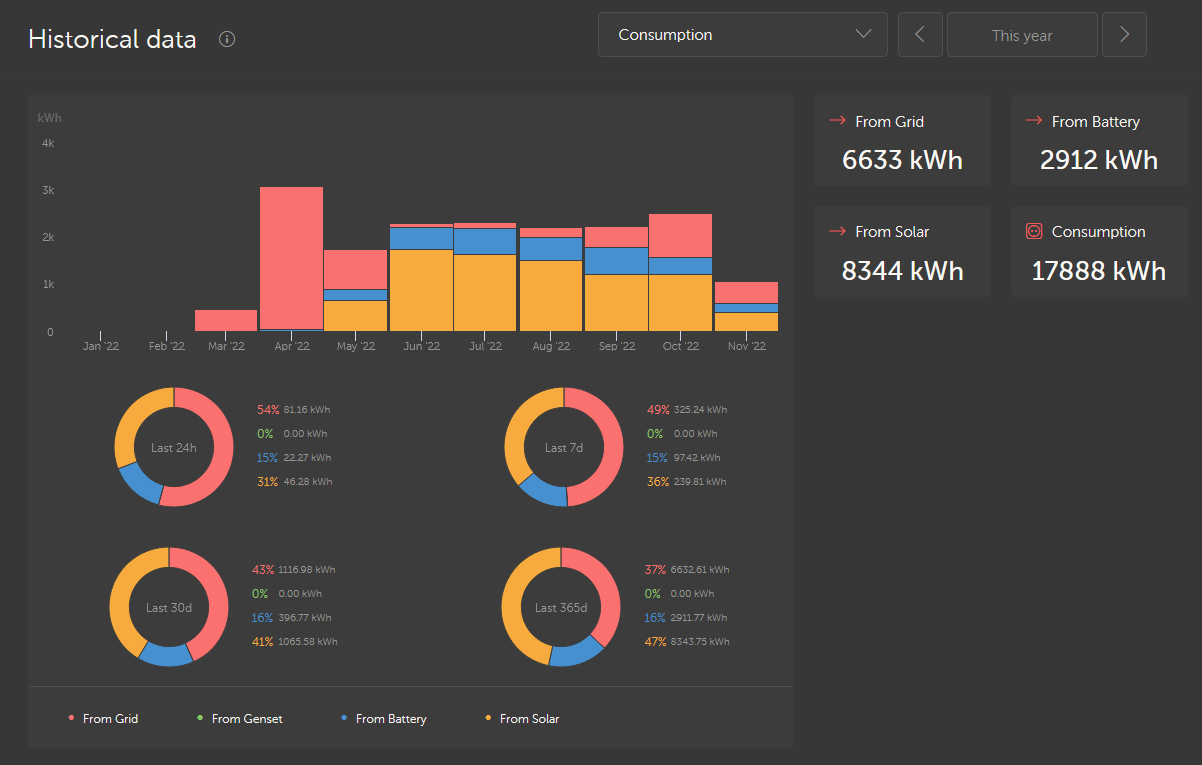Everything I have is ESS Victron, no hidden chargers, or dc consumers, no other PV sources apart from victron mppts, no nothing just 3 Quattros 10kva in 3 phase with victron gel batteries, the only AC consumers on critical AC out, so nothing between grid and quattros. (even though sporadically it sometimes reports there's something there until it self calibrates again to 0)
I took a look at reports for this year (check pics) then went on to calculate battery efficiency:


So system sent 5041 PV kwh into them and only got out 2912.. this amounts to only 57% efficiency.. way out of specs and making it seems like batteries are not worth it.
So decided to purchase 1000 shunt to have a more accurate reporting. I Reset it yesterday after sunset, shunt reports 28 kwh consumed during night while VRM only 22.
Now I'm depressed... it means VRM victron is more or less useless if I want to know if I got my moneys worth out of batteries.
What can cause such discrepancy? By my estimations, there's an average of ~300-400w unaccounted for everytime it inverts from batteries.
I also noticed that after battery reaches min SOC and no more inverting out of them, shunt still registers a discharge of 300-400w.
Looking at quattro specs I see a 60w self consumption so 3 x 60 =180w and maybe it's 96% efficiency?
Ok so lets say before the shunt VRM couldn't register self consumption and only reported what it *might* have gotten out of batteries to supply the AC load (so minus self consumption and self efficiency heat etc), but why after hooking shunt to VRM and set as system monitoring device, it doesn't report the shunt consumption?
